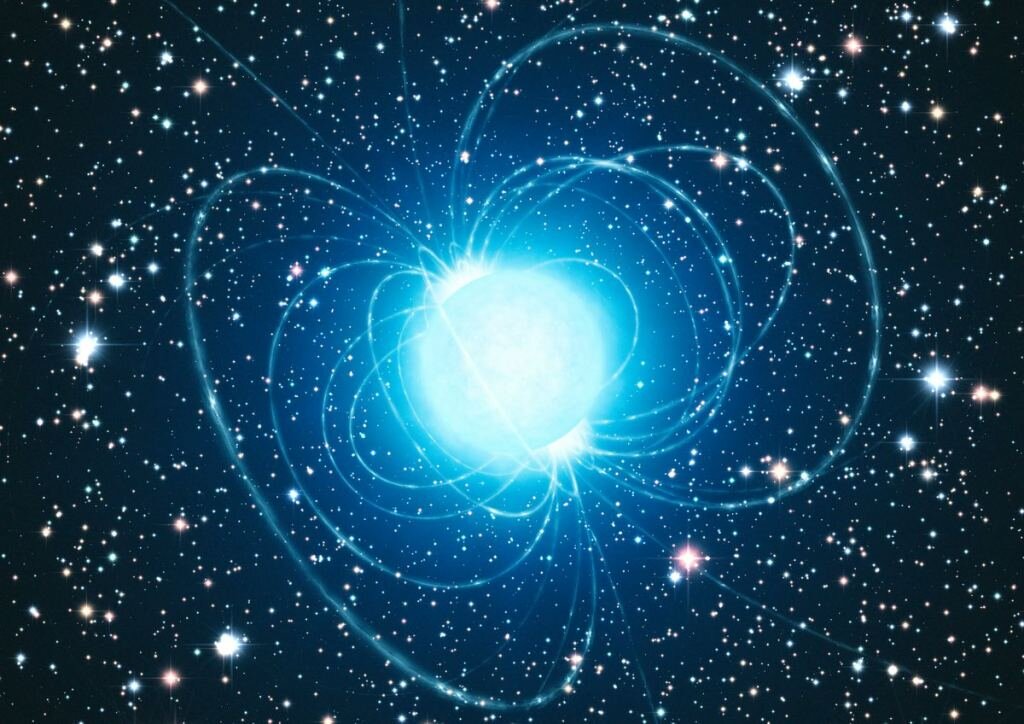
The life and times of dead stars are often far more exciting than the life and times of living stars. While alive, stars hum along, fusing together atoms in their increasingly complex cores and generating light and energy like the nuclear power plants they are. When those nuclear reactions end, light is no longer able to push out and support the star from gravitational collapse, and depending on the mass of the original object, this collapse can lead to anything from a white dwarf to a black hole to massive nebulae marking where no stellar remnant was left behind at all.
Trying to understand how we get all the varied dead stars we see out there has been a challenge, and one of the most curious of these remnants has been the magnetar. These large neutron stars have massive magnetic fields and also demonstrate the flashing behavior of rotating pulsars. They are rare, and to have something be rare but made out of a fairly common object implies that magnetars are either a very short-lived stage in a neutron star’s life or they are neutron stars formed in a very special way, and a new paper posted to ArXiv hints at the latter being the case.
A team led by B.-B. Zhang reviewed the locations of the short gamma-ray bursts looking for evidence that these bursts coincided with the locations of magnetars. They theorized that when two neutron stars merge and release gamma rays and gravitational waves and just about every other wave except sound waves, they theorized that these mergers can create magnetars. And they found a very young magnetar at the location of a gamma-ray burst known as 130310A.
This is just one observation, but it is a start. This isn’t to say this is the only mechanism, but it is looking like this is a mechanism. And it is a mechanism that predicts that, with further work, more of these young magnetars can be found.
This work hasn’t gone through peer review, yet, and I appreciate the clear-cut “we looked at this, we saw this” post that now opens the field for others to pursue, and hopefully confirm, this idea.
More Information
The Case is Building That Colliding Neutron Stars Create Magnetars (Universe Today)
“A hyper flare of a weeks-old magnetar born from a binary-neutron-star merger,” B.-B. Zhang et al., under peer review (preprint)




 Join the Crew!
Join the Crew!
 Escape Velocity Space News
Escape Velocity Space News
0 Comments